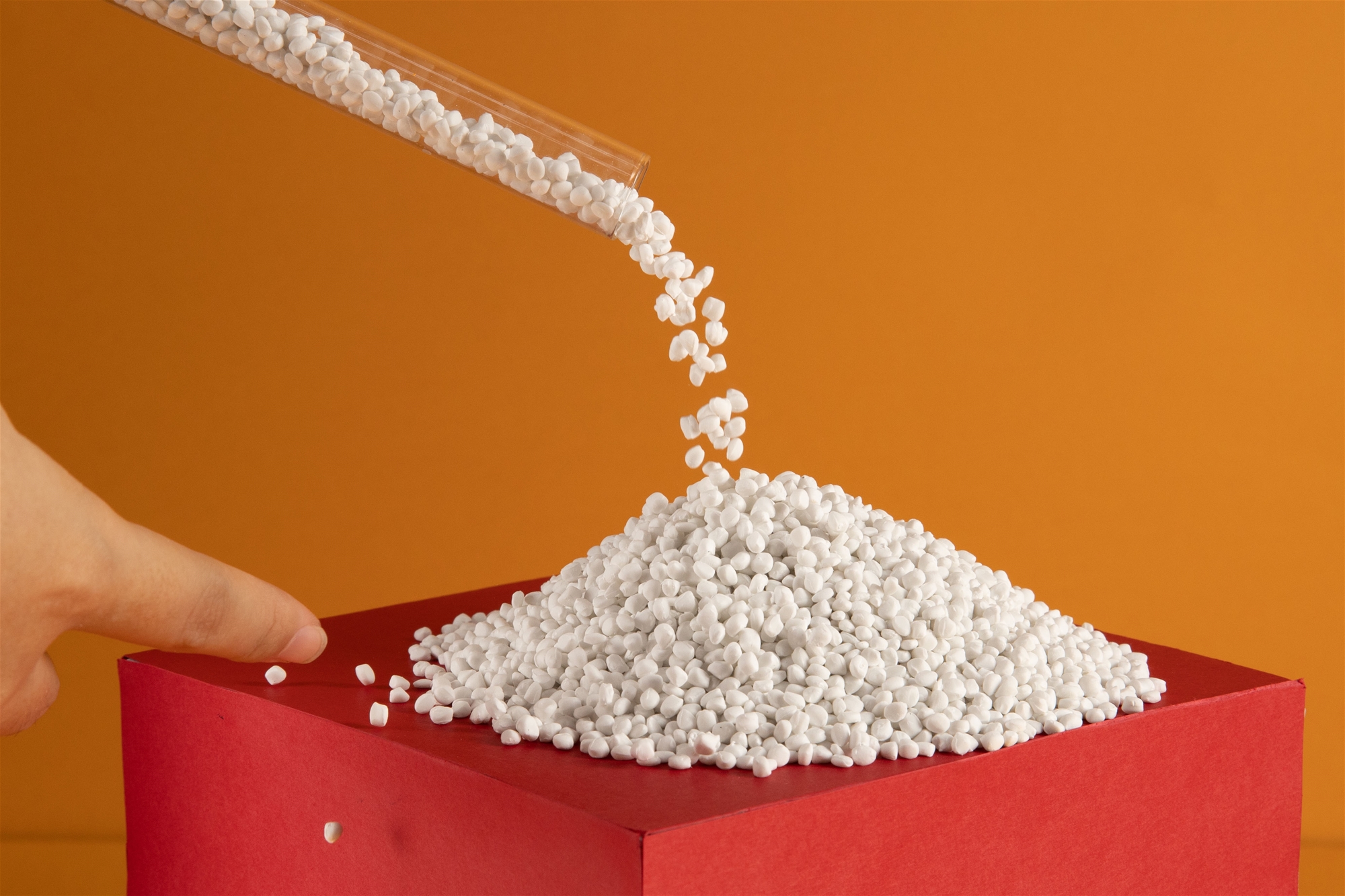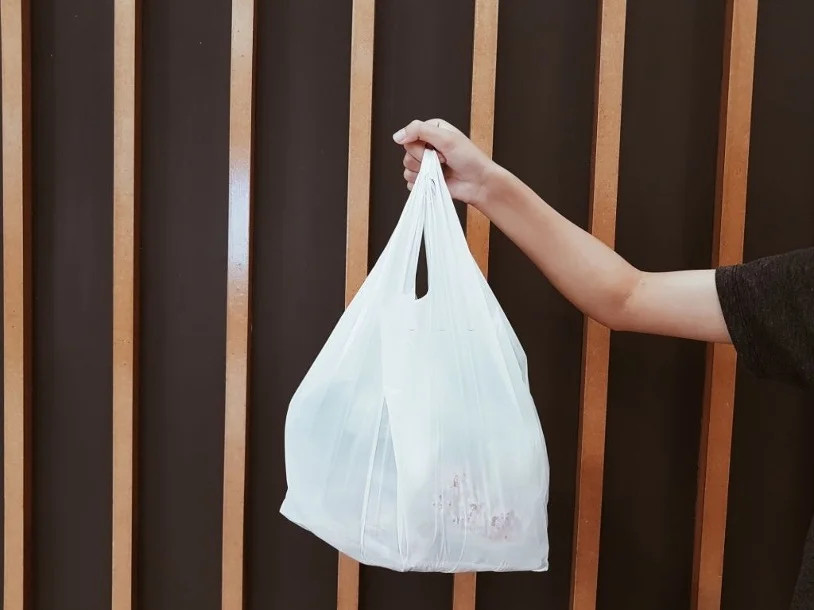1. Overview of white masterbatch
Masterbatch is a concentrated mixture of pigments or additives used to color or improves the properties of plastics. White masterbatch is a plastic additive that adds a bright, white color to plastic products. It is essentially a combination of titanium dioxide (TiO2) and a carrier resin that is added to a base polymer during the production of plastic products. The TiO2 particles in the masterbatch scatter and reflect light, resulting in a white color and increased opacity of the plastic.
The white color masterbatch is inexpensive and adaptable, and it is used in pipes, sheets, films, and packaging materials. It is an important tool in the plastics industry because it can be customized to meet specific brightness, opacity, and other criteria.
2. Advantages of using white masterbatch in industries
2.1. White masterbatch is a cost-effective coloring solution
White masterbatches have an important cost advantage. They allow the production of uniform and consistent colors in plastic products, eliminating the need for costly dyes or pigments. This makes them an affordable and efficient option for manufacturers looking to achieve a bright, white color in their products.
2.2. White masterbatch improves opacity and brightness.
One of the primary benefits of white masterbatch is its ability to provide plastic goods with excellent opacity and whiteness. The white color masterbatch gives the base polymer a uniform and consistent white hue by including premium titanium dioxide (TiO2) and other additives. This is especially useful for applications such as packaging materials and consumer goods that require a pure, dazzling white look.
3. How does the white masterbatch outperform other coloring methods?
Pigments, cube blends, pre-colored resin (compound), and color masterbatch are all options for coloring plastic. Each has advantages and disadvantages. Color masterbatch may be the most common coloring method when manufacturers consider the following factors:
Color masterbatch disperses better than pigments because it is granular.
Mechanical properties: Color masterbatch often includes UV resistance, abrasion resistance, and processing aids to enhance end-product competitiveness.
Color masterbatch's granular form makes it easier to store and deliver than pigments, which can cause contaminants and opacity on the end-product surface.
Color masterbatch is significantly less expensive than pre-colored resins (compounds).

4. Applications of white masterbatch in industries
4.1. White masterbatch is used in plastic bags and film production
White masterbatch is commonly used in the packaging industry to manufacture plastic bags, containers, films, and other packaging materials. It is used to create a white color that gives the packaging a clean and attractive appearance.
Shopping bags, garbage bags, and roll bags are some of the most common applications. Using a white masterbatch improves film layers' dispersion, brightness, and UV resistance, leading to increased content protection. Additionally, it improves the appearance and durability of films, increasing manufacturers' competitiveness.

White masterbatch is also widely used in many applications, including mulch film and silage film. Reflecting sunlight onto lower leaves increases photosynthesis in crops that are typically shaded by upper leaves. White color reflects more visible light than UV light, making it ideal for use in orchards, leafy crops, or to cool soil temperatures.

4.2. White masterbatch is used in woven bags
PE and PP raffia are used in a variety of applications, including PP bags, laminated PP bags, and FIBCs. FIBCs are typically made of thick woven polypropylene fabric (70-250 GSM), which can be coated or uncoated. FIBCs, which are commonly used to store dry, flowable products such as sand, fertilizer, and granules, require high strength, flexibility, and UV resistance.

Furthermore, given the sensitivity of raffia production, selecting a white masterbatch is critical. Customization is essential for reducing water carry-over (WCO), maintaining high retention, and dispersing end products effectively. White masterbatch requires high UV resistance to prevent degradation and yellowing.
4.3. White masterbatch is used in nonwoven bags
PP and PET non-woven materials are commonly used in consumer products, hygiene, filtration, medicine, construction, electronics, carpets, and furnishings. They are also non-disposable. To ensure the successful production of non-woven materials, it's crucial to choose a white masterbatch with high heat resistance and good dispersion.

4.4. White masterbatch is used in injection-molded household items
It’s not difficult to see white plastic items everywhere around us. Let’s take the toy sector for example. Many building blocks, action figures, and dolls have a cheery and eye-catching appearance, thanks to the contribution of white masterbatch.
White masterbatch is also used in the production of caps and enclosures. Caps and enclosures are only considered "qualified" if they can be opened, resealed, and securely hold the contents of the bottle, tub, or tube. White masterbatch should be used carefully to prevent shrinkage and warpage, while also providing excellent stress crack resistance for end-products.
White masterbatch is used in various applications, including tables, chairs, cans, bottles, trays, and boxes, to improve the brightness and whiteness of finished products.

4.5. White masterbatch is used in the construction industry
White masterbatch is used in the building and construction industries to make a variety of products, including pipes, fittings, and roofing sheets. It helps to give these products a consistent and appealing appearance.

5. White masterbatch of StarPoly Vietnam
StarPoly is a filler masterbatch manufacturer in Vietnam, offering a diverse range of masterbatch and additives, including white masterbatch. StarPoly produces white masterbatch by combining high-quality titanium dioxide (TiO2) with plastic resins and other additives.
The most important is tailor-made products that meet the exact needs of the customer. Customers are asked to send samples of end-products and their requirements before placing an order. That is why StarPoly is proud to provide its customers with the best properties and quality.

The technical characteristics of our plastic filler white are as follows:
Carrier resin: polyethylene.
Surface Color: White.
Additives: dispersion agent and processing aid.
Pellet size: 3x3 (±0.3) mm
Packing: 25 kg per kraft bag
Storage: Keep in dry conditions.
Contact us for more information, consultation, and a free sample!
Alison Taylor (Ms)- StarPoly’s Technical Sales Executive
WhatsApp: +84 82 766 1263
Email: Alison@starpoly.vn/ Sales6.starpoly@gmail.com
Skype: Sales6 StarPoly (Ms Alison)